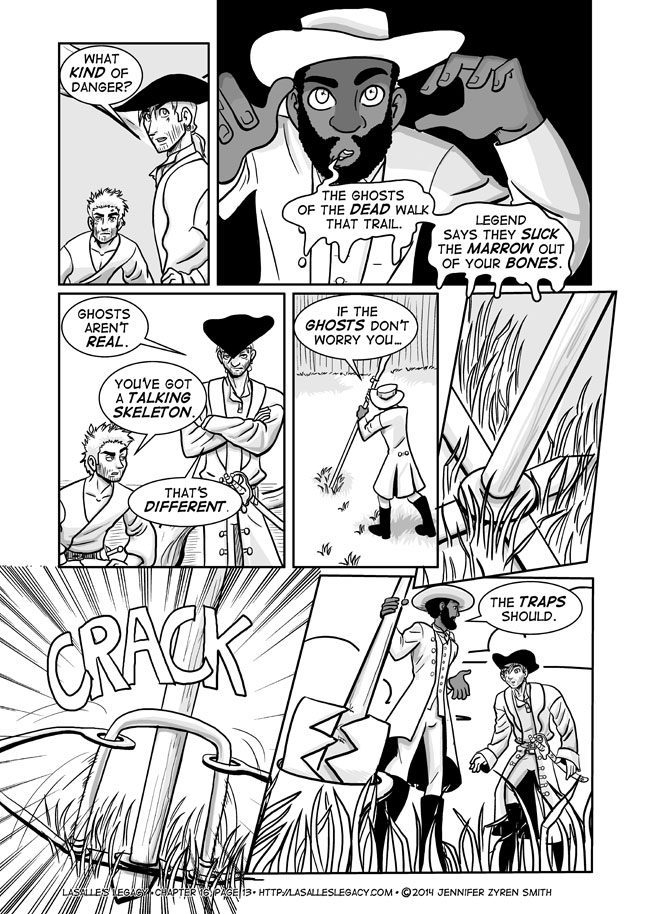Demon’s Spear; Page 13
Oh noes!
The most sobering, and sad, part of this page is that it was based off an article I read about two eighteen year olds creating something very similar as a prank. They had the ball of sharpened stakes and also nailed sharpened stakes in the ground and had tripwires to trip hikers into them. Thankfully the two were caught and arrested and the traps were disarmed before any real damage was done.
Today’s World article is the Live Oak Tree and the Dryad!
Live oak tree (quercous andreana)
The live oak tree is native to the southern islands in the United Islands, particularly North and South Andrea, and Regina. They can vary from shrub-size to towering trees, depending on the growing conditions: typical open grown trees can reach 20 meters (60 feet) in height and have a limb spread of 30 meters (98 feet). Their lower limbs often swoop down to the ground and curve back up again. Natives bend saplings over so the trees will grow at severe angles, serving as trail markers.
The live oak has a deep tap root that anchors it and develops into an extensive widespread root system, allowing the trees to withstand severe winds from hurricanes. The range of live oak trees spread from the coasts to the lower plateaus of mountain ranges and are most commonly found somewhat inland.
The Dryad
The dryad is a live oak tree (quercous andreana) only found in the black ridge mountain range in South Andrea. The biggest distinction of the dryad is that all it’s branches face the north side of the range and point directly to Demon’s Spear, the largest peak in the mountains. The natives of South Andrea , the Coaton, called it Opponomwoa, which means “Spirit Tree”. Coaton legends state that it is a marker to the lands of the dead and points the path out to spirits who have lost their way. It started being called the Dryad when the explorer Andrew Hudson discovered it while mapping the Black Ridge mountains in 1960 and called it such.




I’m not even in the comic and the traps worry me. ^oo^
They are pretty scary. D: